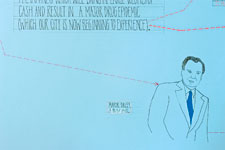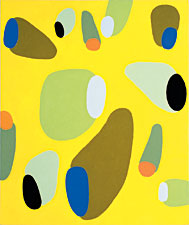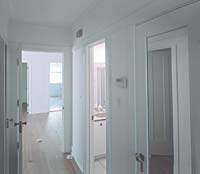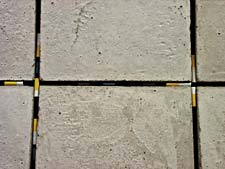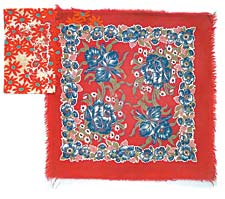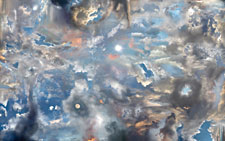|
Photography by Andreas Larsson Deb Sokolow b. 1974 |
|
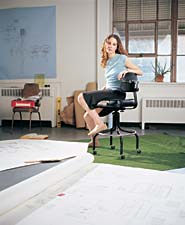 |
Photograph: David Ettinger/Courtesy of the artist |
| Deb Sokolow’s exhibition “Someone tell Mayor Daley, the pirates are coming,” at the Museum of Contemporary Art, portrayed a band of plunderers invading the city. The show notably drew kudos from the Chicago Tribune’s art critic Alan Artner, often a skeptic of experimental work. At 31, this recent MFA graduate is having the sort of buzz most young artists dream about. Her work will be reproduced by the indie ‘zine Punk Planet and seen in shows at the Three Arts Club of Chicago (up through October 27th), Pilsen’s Polvo Gallery, and West Town’s 40000. “Deb’s show made me wish we’d got to her sooner,” says Allison Peters, curator of the Hyde Park Art Center. “She’s doing pretty amazing stuff.” While Sokolow’s style references comics, her observations are more philosophic. As a storyteller, she’s a fan of the movies, but has no plans to dabble in video. “I would love it if someone made my work into a movie,” she says. “But I really like to stay as low tech as possible.” | |
| John Phillips b. 1953 Painting |
|
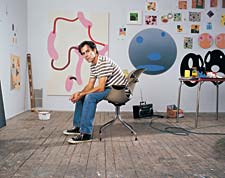 |
Courtesy: Bodybuilder & Sportsman Gallery |
| While the art world has recently offered an onslaught of representational imagery, John Phillips has mined the painterly terrain of abstraction for more than two decades. Indeed, he has been honored with an election to the New York–based group American Abstract Artists, which includes members such as Piet Mondrian and Brice Marden, and rarely opens its circle to artists beyond New York City. The Museum of Contemporary Art, the Art Institute of Chicago, the Chicago Cultural Center, and Columbia College have all shown Phillips’s work. Despite his membership in such a venerable canon, his candy-colored palette and formally tight compositions-which of late seem to resemble goofy faces or droopy balloons-challenge the idea of painting as the highest of high art. The critic Kathryn Hixson has called the work a “mix of serious-minded abstraction and eye-hugging visual entertainment.” As a professor at the School of the Art Institute, Phillips urges students to make work that “takes the history of painting into account.”
Phillips is represented by the Bodybuilder & Sportsman Gallery. |
|
| Laura Letinsky b. 1962 Photography |
|
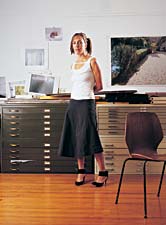 |
Courtesy: Monique Meloche Gallery, Chicago |
|
Laura Letinsky’s dreamy photographs of frozen moments of reflection conjure cinematic notions of love and loss, yet are cast in the cold light of the camera’s lens. Born in Canada, this Yale-educated Hyde Parker now chairs the Department of Visual Arts at the University of Chicago. Her exhibition schedule includes a rare solo show by a Chicagoan at the Renaissance Society of the University of Chicago, which occasioned an exhibition preview in Artforum, the holy grail of the art press. Collected by the Art Institute of Chicago, the San Francisco Museum of Art, and Houston’s Museum of Fine Art, Letinsky’s work has graced the cover of The New York Times Magazine. “[Letinsky’s] photographs are elegant messes,” says the Renaissance Society’s director, Susanne Ghez. They are “records of everyday objects in a disarray of decay.” Letinsky is represented by the Monique Meloche Gallery. |
|
| Nathaniel Robinson b. 1980 Multimedia |
|
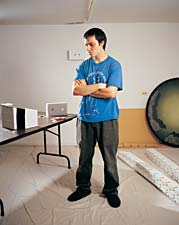 |
Courtesy the artist |
| When asked what it was like to have been compared to the art star Robert Gober in an essay that accompanied his recent show at the Museum of Contemporary Art, Nathaniel Robinson paused for a moment and replied, “No one has ever written an essay about me before.” Well, at 25, he just completed his MFA at the School of the Art Institute of Chicago. After getting his bachelor’s degree at Amherst College in Massachusetts, he came to Chicago for the interdisciplinary approach of SAIC. He has worked in a variety of media, including video and sculpture, though all his art tries to reconcile his struggle between reason and experience, the external world and subjective perspective. In the essay accompanying the MCA show, curator Heather Pesanti pointed out another dichotomy: “His art strives to be deeply humorous and existentially dark at the same time.” | |
| Karen Reimer b. 1958 Fiber |
|
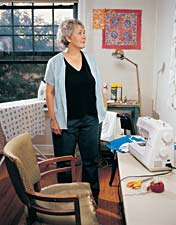 |
Courtesy: Monique Meloche Gallery |
|
Karen Reimer’s compositions of needlework on canvases of fabric bring a medium once relegated to the realm of sentimental folk art into the contemporary discussion of conceptual work. Her laboriously embroidered re-creations of discarded Laffy Taffy wrappers and credit-card-bill envelopes examine the idea of value: forging an object of worth from an inconsequential original. Similarly, in a conceptual twist, the work itself seeks to heighten the value of craft to that of fine art. Later works of embroidered newspaper broadsheets, which left out whole columns in the artist’s translation, examine the idea that the withholding of information can change value and meaning considerably. Her projects have been seen at venues such as the Hyde Park Art Center, the Maryland Institute of Art, the DePaul University Art Museum, and the Kohler Arts Center. “I want to make things that are not easily classified, to radically slow down the process of recognition and naming,” she has said in an artist’s statement, “in order to study how meaning and identity are constructed, and to notice and question the cultural assumptions and values underlying those understandings.” Reimer is represented by the Monique Meloche Gallery. |
|
| Ken Fandell b. 1971 Photography and video |
|
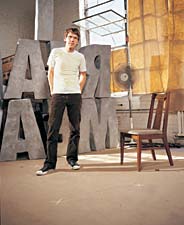 |
Courtesy: Bodybuilder & Sportsman Gallery |
|
After a stint as a digital imaging technician for Disney, Ken Fandell returned to his native Chicago to teach photography at the School of the Art Institute. It’s no accident Fandell’s chosen medium allows the represented image to be manipulated easily-his work shows a continually shifting perspective on how things appear and how they really are. For a recent exhibition at the Museum of Contemporary Art, Fandell offered images of a cerulean blue sky streaked with clouds. On closer examination, the compositions reveal birds, planes, even a full moon in the dark-images the artist collected over time and fused into one celestial dome. “Photography is a way of obliterating time and space,” says Fandell, who is currently working on a piece that will use satellite photographs to map a trail from his West Town studio to the gallery that will show the work in Missoula, Montana. New York’s Museum of Modern Art, the Brooklyn Museum of Art, Chicago’s Museum of Contemporary Art, and the LaSalle Bank Collection have all snapped up his pieces. And considering Fandell’s fidelity to imaging media, it seems only natural that a little outfit called Microsoft also owns his work. Fandell is represented by the Bodybuilder & Sportsman Gallery. |
|




